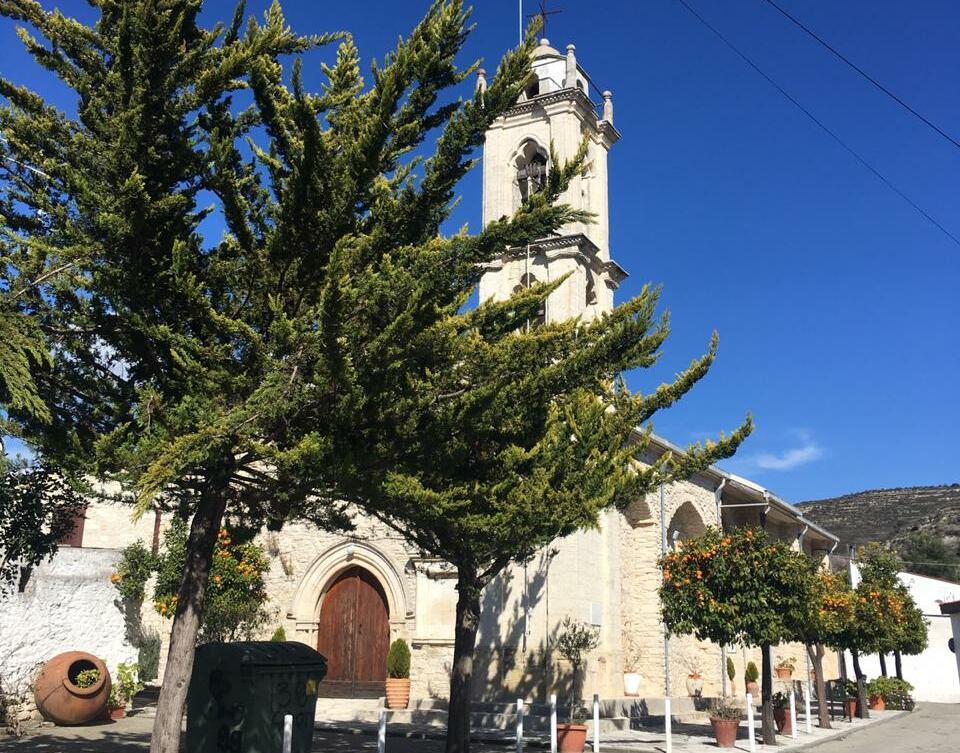The pearl in the crown of Тrodoos is the beautiful Laneia, one of Cyprus’ most picturesque villages.
30 minuets from Limassol!
It is here you can get an insight into traditional Cypriot architecture. Small narrow streets paved in stone, houses with tiled roofs, yards smothered in flowers and greenery will leave no one unimpressed!
History
According to legend, Lаneia received its name in honour of the daughter of Dionysus, the Greek god of wine. You can find an ancient and authentic wine press, Linos, dating back to 1822, which hints at the fact that the village used to be famous for its wine-making traditions, vineyards and wine of high quality.
Just a short 30 years ago there was a barely visible path that led to the cosy little village. Travelers from Limassol normally stayed here for the night.
They did not enter the village, but stayed at a roadside place near a gigantic tree called a royal oak. This incredible tree, although recently succumbing to old age, took root in the stony soil as far back as the 12th century.
There is only a huge stump left from the magnificent tree now, which still meets travelers and reminds them of the past.
The Village of Painters
Each day dozens of people tread the main road of Limassol – Тroodos and miss the little visible sign to Laneia. They simply have no clue what a miracle is hiding behind this name!
Painters and writers and those who appreciate comfort and peace are in love with this place. Many creative people who come to the island choose this village as their retreat. They are mesmerized by the beauty of the surrounding mountainous landscape, the small streets of outstanding beauty and picturesque views. This is why Laneia is called the village of painters.
The first horse driven bus appeared in Laneia in 1920. It shuttled from Аlassa to Limassol. Apart from Laneia, only the village of Кilani had a bus of its own.
The first village school in this region was also opened in Laneia in 1845.
English painter Michael Owen, who created a gallery of unusual paintings in the 70’s, lives in one of the oldest houses. You will recognize the house by the yellow gates leading to an unusual little yard with a green garden, where the painter took his inspiration.
His original pictures are kept in private collections all around the world, including Russia.
Another white-stoned studio belongs to English painter Patrick Thompson and has been entertaining guests since 1992. Finding it is quite easy – it is located on the right side of the street near the entrance to the village.
Every detail of Laneia is beautiful – the silence and incredible cleanliness of little whitewashed streets, small flower pots displayed in the mountain sun, donkeys resting in the shade of trees, almond trees which bloom in the spring, and small orange trees. Everything is arranged with incredible care and love!
Wine-making in Cyprus
In a village tavern they will treat you to tasty home-made food, whilst the locals teach you about bee farming, fruit growing (pears, plums, apricots and others), processing of walnuts and, of course, wine-making.
Locals say that after the vineyards died in France, King Henry himself arrived here to find healthy wine plantations. He found them in the far-away little village. Villagers gave some vine shoots to the king and he loaded them on a ship and later planted them on his native French soil to produce champagne wines.
Laneia is one of ten villages of the region which produce the basis for commandaria, the most famous Cypriot dessert wine, which is aged in oak barrels in the cells of the large wine-making regions of Cyprus.
If you get the chance, try the tangy old wine called ‘nama’
Laneia’s Sights
At the end of your walk around the village, go to the charming white-stoned little church which was renovated in 1903.
This is a magnificent basilica of the 16th century and keeps a precious icon of the Virgin Mary Valanas, dating back to the 12th century.
The icon was discovered in the ruins of an ancient monastery, which used to stand on this site in the 15th century and was destroyed by Turkish conquerors 100 years later.
Later four boards from Russia were found in the same ruins; on the outer side of one of them was a scene from the Old Testament depicting Adam, Eve and a barely visible snake.
Тhose who are interestеd in history should come to the village on a Sunday from 3 tо 6 when you can listen to a lecture in the ethnographic museum of Laneia, which was given to the village as a gift by the Lanitis family, natives of the region.
When the sun splashes its evening colours on the off-white walls of Laneia, sit at a table in a cosy local tavern to feel the hospitability of the locals and sample unforgettable delights.
If you visit village in March you can see almond bloom
